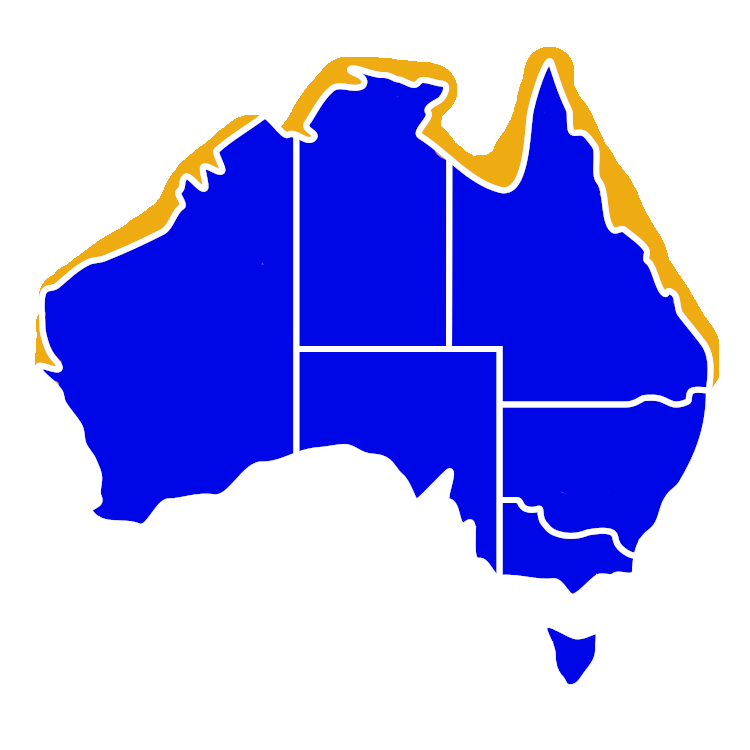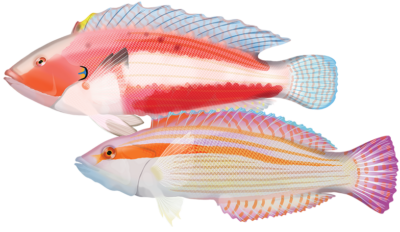Quick Facts
Distribution

Interesting Info
- The Sharpnose Wrasse is widespread in the tropical waters of the Indian Ocean and western Pacific Ocean, ranging from Western Australia through Northern Territory and across the Queensland coastline.
- Sharpnose Wrasse are known for their bright multicolour bodies. The typical coloration is a mix of red-orange with dark blue stripes that run longitudinally along the body.
- They have distinctive large, sharp canine teeth, especially in the lower jaw, which they use to crush their prey. This feature distinguishes them from other wrasse species.
- Sharpnose Wrasse are carnivorous, feeding primarily on small invertebrates like crustaceans and molluscs. They use their sharp teeth to crush hard shells.
- They are polygynous, with males often maintaining harems of females. Breeding season typically falls in the warmer months, from October to February.
- Males establish territories for breeding and court females with distinct displays. These territories often consist of areas with dense coral or rock formations that provide protection for eggs.
- Like other wrasses, the Sharpnose Wrasse is diurnal, active during the day and resting at night. They seek shelter in crevices or bury themselves in the sand to avoid predators.
- Their estimated lifespan is between 5 – 10 years.
Species Interaction
Recreational Fishing, Snorkeling & Diving
They are not typically targeted by recreational fishermen due to their smaller size. They are valued more for their role in maintaining the health of the reefs. They can be shy and elusive, but their bright colours make them relatively easy to spot when diving or snorkeling in areas they inhabit.
Scientific Classification
Kingdom: Animalia
Phylum: Chordata
Class: Actinopterygii
Order: Perciformes
Family: Labridae
Genus: Cheilio
Species: Cheilio Inermis
Conservation Status
The Sharpnose Wrasse is not considered endangered or threatened in Australia. They are common throughout their range but are monitored due to their importance in maintaining reef health.
How to catch
Sharpnose Wrasse
Catch Difficulty: Easy
Tackle: Running Sinker Rig
Bait: Crab, Fresh cut flesh baits, Pilchards, Prawns, Squid, Worms, Yabbies
Technique: Keep bait close to the reef/structure
Popularity: Not targeted
Recreational Viewing
- Snorkeling & Scuba
Finding: Easy
Temperament: Shy
Location: Inner Reef, Outer Reef, Lagoon, Seagrass Beds
Danger: None





